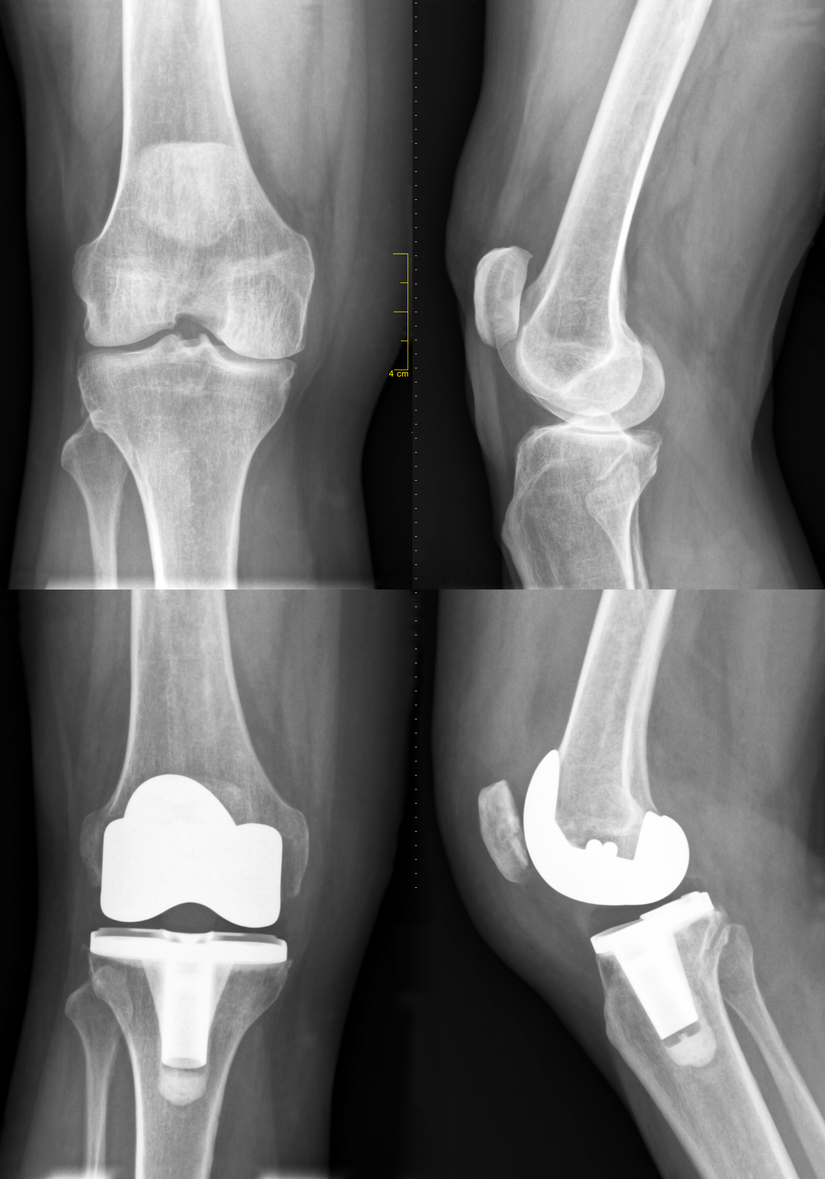Understanding Knee Replacement Surgery
Knee replacement surgery is a transformative procedure that alleviates pain and improves function in those with severe knee damage. There are two primary types: partial knee replacement and total knee replacement.
- Partial knee replacement: Also known as unicompartmental knee arthroplasty, the partial knee replacement focuses on replacing only the damaged part of the knee.
- Total knee replacement: Involves replacing the entire knee joint.
Discussing these options with your healthcare provider is crucial to determining the best approach for your specific condition.
Typically, knee replacement is considered when conservative treatments like physical therapy, medication or injections fail to provide relief. Conditions such as osteoarthritis, rheumatoid arthritis and post-traumatic arthritis often lead to this surgery due to the significant pain, stiffness and reduced mobility they cause. Understanding the partial vs. total knee replacement and the pros and cons of each procedure is key to making the right choice for your health.
Differences Between Partial and Total Knee Replacement
When considering knee replacement partial vs full, it's essential to understand the differences.
Partial knee replacement targets only the damaged compartment of the knee joint, preserving healthy bone and cartilage. This option is often recommended for patients with arthritis affecting a specific knee compartment and typically results in less pain and quicker recovery.
Total knee replacement, or total knee arthroplasty, involves replacing the entire knee joint, making it suitable for patients with extensive joint damage or severe arthritis affecting multiple compartments. This procedure resurfaces the entire joint with artificial components to restore alignment, stability and range of motion.
The primary distinction between partial knee replacement vs full knee replacement lies in the extent of the surgery. While partial knee replacement surgery targets one compartment, total knee replacement addresses all compartments. This affects the surgical approach, recovery process and potential outcomes.
Pros and Cons of Partial Knee Replacement
Partial knee replacement offers significant benefits, particularly for patients with isolated osteoarthritis. One major advantage is the shorter recovery time compared to full knee replacement. Patients often experience less postoperative pain and return to their daily activities more quickly.
This procedure allows patients to retain more of their natural knee structure, leading to better function and a more natural feel during movement. However, surgery for partial knee replacement is not suitable for everyone. It is generally recommended for patients with isolated knee damage and good overall knee stability. A thorough evaluation by an orthopedic specialist is essential to determine if partial knee replacement surgery is the right choice.
Potential risks of partial knee replacement surgery include complications such as infection, blood clots or implant longevity issues.
Pros and Cons of Total Knee Replacement
Total knee replacement (TKR) significantly alleviates pain and restores function in severely damaged knees. Patients often experience dramatic pain reduction post-surgery, allowing them to resume activities previously limited by discomfort. Many implants last 15 to 20 years or more.
Potential complications associated with the total knee replacement surgery include infection, blood clots and implant failure. The recovery process can also be lengthy, requiring extensive physical therapy and rehabilitation. Patients may experience stiffness and swelling during recovery, impacting their quality of life, while healing.
TKR is recommended for individuals with severe arthritis, significant joint damage or those who have not found relief from conservative treatments. Consulting with a health care provider is essential to determine if TKR is suitable.
Recovery and Rehabilitation After Knee Replacement
Recovery times vary between partial and total knee replacement surgeries. Partial knee replacement patients typically return to normal activities within 4 to 6 weeks, while total knee replacement patients may require 3 to 6 months for a more complete recovery. Factors such as age, overall health and adherence to post-operative care can influence individual recovery times.
Rehabilitation exercises are crucial for both procedures. Partial knee replacement rehabilitation focuses on regaining range of motion and strength, while total knee replacement rehabilitation involves more intensive exercises to improve flexibility, strength and endurance. Success in recovery is influenced by a patient’s commitment to following physical therapy instructions, overall health status and the presence of underlying medical conditions.
To learn more or to schedule an appointment, visit riversideonline.com/ortho.



